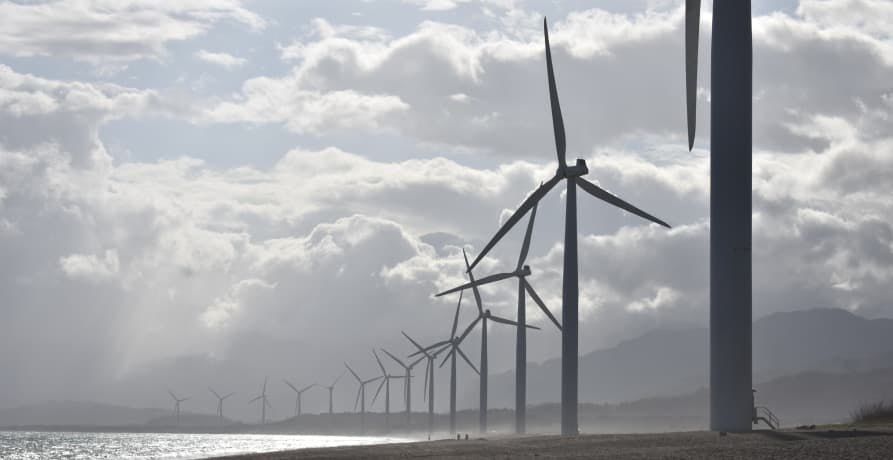
Impacts, Risks, and Opportunities (IRO) for CSRD Reporting
In this article, we’ll break down what IROs are, how to identify and assess them, and what CSRD requires in terms of disclosure.
ESG / CSR
Industries



If you're on a mission to reach net zero and tackle climate change, you've probably heard about carbon offsetting and carbon removal. But let's face it, the world of carbon politics can be complex, and the different terminology can be confusing! Don't worry, though. We've got your back with a complete guide to carbon offsetting and removal. We'll break it down for you, from what these terms actually mean to how they work and even tips for making smart investment choices in carbon offsetting projects.
👉 In this article we’ll explore what carbon offsetting and removal actually means, how it benefits the environment, and how you can utilise these methods to reduce your carbon footprint.
The first-ever carbon offset project took shape as an agriforest initiative in Guatemala. In 1989, AES (Applied Energy Services) partnered with CARE, a non-governmental organisation, to plant 52 million trees, aiming to counteract greenhouse gas emissions.
👉 A major milestone in the journey of carbon offsetting came in 1992 with the Kyoto Protocol, which introduced the first offset provisions through the Clean Development Mechanism (CDM). This mechanism enabled developed countries to offset their emissions by investing in environmentally beneficial projects in developing nations. This laid the foundation for the emergence of the "compliance" market for carbon credits, which we'll go into in more detail later.
But the story doesn't end there. In 2005, voluntary carbon offset credits emerged, revealing a new potential for carbon offsetting beyond just governments and regulated companies. This realisation opened up the market, with many businesses now eager to offset their carbon footprints.
Since then, the market for carbon offsets has continued to grow, reflecting a growing collective awareness of the pressing need to address climate change and reduce our carbon impact on the planet.

Carbon offsets encompass a wide range of projects and initiatives, each contributing to the fight against climate change. Let's take a closer look at some examples:
Each of these carbon offset examples represents a step towards a more sustainable future. By supporting such projects, individuals and businesses can take tangible action to mitigate their carbon footprints and actively contribute to the collective fight against climate change.
👉 A unit like this makes carbon credits transferable, meaning that one organisation (say, a wind farm) can sell the unit to another organisation (say, a software company), to compensate for the greenhouse gases the software company emits.
This is crucial because it means the software company doesn’t have to start a wind farm in the empty lot next to its office to compensate for its emissions. And this is how we end up with carbon credit markets.
There are two kinds of carbon credit markets: the mandatory market, and the voluntary market.
Governments or legal systems regulate mandatory or ‘compliance’ markets.
In these markets, organisations that are required to offset carbon emissions can purchase the credits they need to stay compliant.
On the other hand, voluntary carbon markets operate independently from compliance markets.
In the voluntary market, countries, companies, and organisations can buy and sell carbon credits simply because they want to - whether to fulfil their own net-zero targets or for a variety of other reasons.
👉 The tricky part about voluntary carbon markets is that, historically, they haven’t been as well regulated as mandatory markets. But at COP26 in 2021, the UN laid down rules for voluntary carbon markets, so this space is changing quickly.
The COP26 conference marked a new era in carbon credit trading, establishing concrete rules within the framework of Article 6 of the Paris Agreement.
This keystone provision allows nations to collaborate on their climate objectives and paves the way for international carbon trading.
👉 Article 6 of the Paris Agreement, though high in potential, had remained largely inoperative since its inception due to a lack of specific implementation guidelines. However, this barrier was dismantled at COP26 with the finalisation of the Paris Rulebook, a set of decisions that provide practical details for implementing the Paris Agreement. The Rulebook’s key decisions relating to Article 6 are anticipated to invigorate international emissions trading and energise the growing market of voluntary carbon credits.
Article 6.2 allows nations to strike bilateral or multilateral agreements to exchange Internationally Transferred Mitigation Outcomes (ITMOs). These emission reduction credits can be measured in carbon dioxide equivalent or other units, such as kilowatt-hours of renewable energy.
👉 Countries such as Japan and Switzerland have taken the initiative to trade ITMOs. However, details for this mechanism still need to be finalised, which could postpone broad-scale trading.
Article 6.4 of the Paris Agreement lays the groundwork for a global carbon market overseen by the 'Article 6.4 Supervisory Body' (6.4SB), a United Nations entity. To issue UN-recognised credits, known as A6.4ERs, project developers need to secure approval from both their host nation and the 6.4SB. These credits, expected to be available to nations, corporations, and even individuals, are not predicted to begin trading until at least 2024, awaiting the establishment of requisite regulatory bodies and centralised registries.
The consensus reached at COP26 on a rule package to govern these international carbon market mechanisms under the United Nations Framework Convention on Climate Change (UNFCCC) represents a significant shift in the voluntary carbon market. This new set of rules aims to make carbon trading more transparent, standardised, and consistent, signifying a pivotal step forward in the global battle against climate change.
👉 To learn more about the Paris Agreement why not check out our article.

This is what makes them different from most carbon offset projects, which are designed to simply reduce carbon dioxide emissions now and in the future (for example, by creating more sources of clean energy), rather than removing the carbon that’s already out there.
Think of carbon removal as reversing the damage we’ve already done (a ‘cure’), and carbon offsets as compensating for the damage we’re currently doing, as well as preventing more damage from happening in the future (a ‘prevention’). To get to net zero fast, we’ll need both the prevention and the cure.
Whether you’re an individual, a company, or a government, a commitment to net zero will require more than just carbon offset credits - it will also require carbon removal credits. These credits ought to match, or even surpass, the inescapable 'essential' emissions that you’re unable to cut down.
👉 As a collective global community, the only way to get to net zero and keep the temperature rise below 1.5°C - a goal established at COP 21 in Paris, 2015 - is to start removing the carbon that’s already out there.
This brings up an interesting question: why aren't carbon removal projects and credits, with their potential to reverse existing damage, more popular than carbon offset credits? The reality is that the carbon removal marketplace is complex and laden with various challenges. Let's take a closer look at these obstacles:
As we work towards our net-zero goals, the carbon removal market is facing a big challenge: the demand for carbon removal drastically outstrips the supply.
👉 To hit our climate goals by 2050, we'll need to remove between 70 and 225 Gt (gigatonnes) of CO2 from the atmosphere. That's no small feat, and it puts the carbon removal market front and centre in the climate change fight for the next three decades.
So, why do most carbon credits come in the form of offsets rather than removals?
Right now, if you can even find carbon removal credits, be prepared to shell out considerably more than you would for a carbon offset credit. While this high cost is a testament to the difficulty of carbon removal, it underscores the urgent need for more investment and innovation in this critical market.
👉 If you’re interested in finding out more about carbon capture, utilisation, and storage (CCUS), why not take a look at our article on the topic.
Artificial carbon removal projects take a technology-driven approach to pulling carbon dioxide out of the atmosphere. Examples of such projects include:
On the other hand, 'natural' carbon removal projects leverage the Earth's own processes to absorb and store CO2. Here are some of the ways this is done:

How do these vital ecological components function, and how do they influence our climate mitigation strategies? Let's explore this further.
Investments aimed at conserving and safeguarding these forests and oceans can be characterised as carbon removal credits. The reason is that these ecosystems perform a function that mirrors what advanced carbon capture technology seeks to achieve: ie. the extraction of carbon from the atmosphere and its safe storage.
⚠️ The significance of protecting these natural resources cannot be overstated. If these carbon sinks are compromised or destroyed, they can release their stored carbon back into the atmosphere.
Forest preservation is fairly straightforward - preventing deforestation helps maintain these carbon stores. However, it might be less obvious that maintaining healthy ocean ecosystems is equally crucial. When oceans are negatively impacted by factors such as pollution, increasing temperatures, or disrupted ecosystems, their capacity to sequester carbon effectively diminishes.
👉 To learn more about carbon sinks and the crucial role that they play in balancing the carbon cycle, why not read our article.
Like in any industry, the field of carbon offsetting can be prone to errors and, in some instances, fraud.
As carbon credits are intangible, not physical commodities, determining their authenticity can be difficult. Additionally, even if the intentions are good, carbon offsets might not always be legitimate, or they might inadvertently cause other global issues.
Let's examine the 7 key elements to consider when evaluating a carbon offset or a carbon credit.
The results of the carbon offset must be able to be measured and quantified in a standardised way so that we can clearly understand the scale of the carbon reduction achieved.
'Additionality' means that the carbon offset should foster a carbon reduction that wouldn't occur otherwise. Essentially, the investment should underpin a project that wouldn't have been viable without it. For example, would the forest have been preserved anyway?
When investing in a carbon sequestration project (one that extracts and stores CO2 from the atmosphere), it's vital that the project ensures the carbon remains out of the atmosphere indefinitely, or at least for a substantial duration. If the carbon is simply released after purchasing the credit, there's no actual gain.
This happens when a project doesn't genuinely reduce carbon emissions - instead, the emissions are just shifted elsewhere. For example, a certain forest area might be protected from deforestation, but if the timber that would have been harvested and sold from this area is merely sourced from another unprotected forest, it’s not actually bringing any benefit.
On top of this, all legitimate carbon offsets must make sure they’re not creating an additional negative impact on the environment (or communities). For example, consider the potential consequences of a wind farm project erected on Indigenous communities' land.
Carbon offsets must be validated by impartial third-party auditors.
Some carbon offset schemes might over-report the amount of carbon they’ve reduced. This might occur due to an overestimation of baseline emissions, which essentially stems from a miscalculation of the reductions (basically overlooking additionality).
It can also happen if a project underestimates actual emissions. Since reductions are calculated by comparing actual emissions with predicted baseline emissions after a project is complete, if the actual emissions are underestimated in the first place, the reductions won’t be as significant as initially calculated.
Another potential issue is that some projects may overlook their own carbon emissions (the issue of leakage), and credits might be granted through forward crediting, which signifies the offsets a project anticipates achieving. This can be problematic because of the difficulty in making accurate estimates, leading to the potential overselling of credits.
One big problem for carbon offsets is how easily they can be double-counted. Since credits are virtual products, there are a few ways they can be double-sold. The first is through double issuance: ie. where a carbon offset project mistakenly assigns two credits to a project that only accounts for one, or when two different projects claim the same reduction.
The second way is through double use, which is when the same credit is sold twice, typically through fraudulent sellers.
Lastly, there's double claiming, which is when a project is issued offset credits that are then also counted by another organisation, such as a government or a company. Both organisations then report this reduction in their reporting.
Although carbon offsetting and removal is a crucial part of the transition to net zero - and necessary for keeping global temperature rises below 1.5°C - investing in these credits isn’t like waving a magic wand.
👉 It’s easy to think of buying carbon credits as an easy way to fix a global problem, and as something that makes up for the environmental damage your business is responsible for. Many people believe that these credits are a way to ‘throw some money at the problem’, and have it disappear.
Think of carbon credits as the third step in the journey to going carbon neutral: first, you track your footprint (something that Greenly can help with). Then, you focus on reducing the size of your footprint (ie. your carbon emissions) as much as humanly possible. Then, and only then, does investing in carbon offsets and removals make sense.
Without this second step to reduce your emissions, you’re still creating an overall negative effect on the environment. You can’t simply offset your way out of the problem.
At Greenly we can help you to assess your company’s carbon footprint, and then give you the tools you need to cut down on emissions. Why not request a free demo with one of our experts - no obligation or commitment required.
If reading this article has inspired you to consider your company’s own carbon footprint, Greenly can help. Learn more about Greenly’s carbon management platform here.